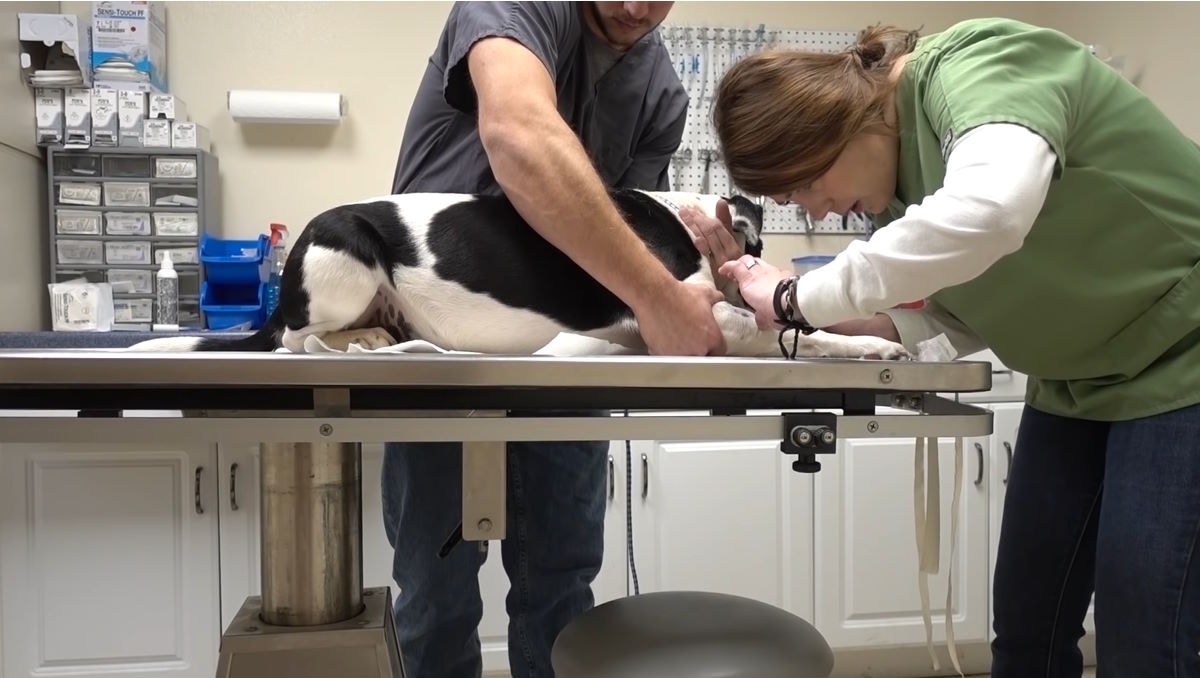If you’ve ever witnessed your furry friend leaping off furniture or running on slippery surfaces, you’ve probably wondered how far dogs can fall without getting injured. As responsible pet owners, it’s natural to be concerned about their safety. To help you understand the risks and keep your pup safe, we’ve gathered information from animal health professionals worldwide. Read on to discover crucial insights that can protect your dog in all types of danger zones.
How High Can Dogs Jump Without Getting Hurt?
The answer to this question depends on several factors, including the size of the dog, the height of the fall, and the landing surface. Generally, it is not recommended for dogs to fall more than one story (about 10 to 15 feet) as it poses a serious risk of injury. Smaller dogs, such as toy breeds, are even more susceptible to severe injuries from smaller falls due to their delicate size and lack of padding on their bodies. Grass or other padded surfaces can provide some level of cushioning and reduce the risk of injury in shorter falls. Additionally, larger dogs have longer legs and can distribute their body weight more effectively, which helps dissipate shock upon landing.
Common Injuries Dogs Can Sustain from Falling: Signs and Treatments
Head Injuries
Head injuries are the most common and serious injuries that dogs can sustain from falling. These injuries can range from mild concussions to severe conditions like skull fractures, brain bleeding, or even death. Signs of head trauma include loss of balance, disorientation, lethargy, seizures, and vomiting. If you suspect your dog has suffered a head injury, it is crucial to seek immediate veterinary care.
Broken Bones
Falling can lead to broken or fractured bones, particularly in the legs, spine, ribs, and shoulders. Swelling, deformity, or the refusal to put weight on a limb are clear indications of a possible fracture. In such cases, it is essential to visit a veterinarian without delay.
Cuts and Lacerations
Sharp objects or debris on the landing surface can cause cuts and lacerations when dogs fall from great heights. Even minor cuts can become infected and require medical attention. Severe cuts may necessitate stitches or surgery.
Internal Injuries
Hard falls can result in internal injuries such as broken ribs, punctured lungs, and organ damage. Signs of abdominal pain, including panting, difficulty breathing, or loss of appetite, require immediate veterinary care.
Soft Tissue Injuries
Soft tissue injuries like sprains, strains, and tears of muscles and ligaments can also occur from falls. Recovery time for these injuries varies depending on their severity. If your dog is limping or favoring a limb, it is advisable to have them checked by a veterinarian as soon as possible.
Frequently Asked Questions
How can you tell if a dog is scared of heights?
Signs that a dog is scared of heights include trembling, heavy panting, avoidance of high places, even when encouraged, and hiding behind their owners or objects. To help your dog overcome their fear of heights, gradually introduce them to higher places in a safe and controlled environment.
What should you do if your dog falls?
If your dog falls and gets injured, it’s important to stay calm. Take them to the vet as soon as possible for a thorough check-up and proper treatment. Splints or bandages may be necessary in some cases. Monitor their activity levels following the fall to ensure they are healing properly.
How can you prevent your dog from falling?
The best way to prevent falls is to keep your dog on a leash during walks and in public areas. Ensure that the collar or harness fits properly and securely to reduce the risk of injury if they pull away or jump suddenly. Be mindful of obstacles such as stairs or curbs that may cause stumbling and avoid them when possible. Regular vet checkups, exercise, and a balanced diet are also vital for maintaining your pet’s overall health and strength.
Conclusion
In conclusion, the distance a dog can fall without getting hurt varies depending on factors such as breed, lifestyle, and the terrain. While larger breeds may have a better chance at surviving freefalls, any dog, regardless of size, can potentially injure themselves when taking an unexpected plunge. However, with proper training and care, dogs of all sizes have displayed remarkable feats of endurance even when faced with tremendous heights. Being aware of your pet’s abilities and limitations will help you protect them by avoiding risky situations. Remember, prioritizing your dog’s safety over your desires, such as not lifting them onto precarious ledges or balconies, is crucial. By following these tips, you and your furry companion can enjoy life’s adventures together while staying safe.
To learn more about keeping your dog safe and healthy, visit Pawsoha.
